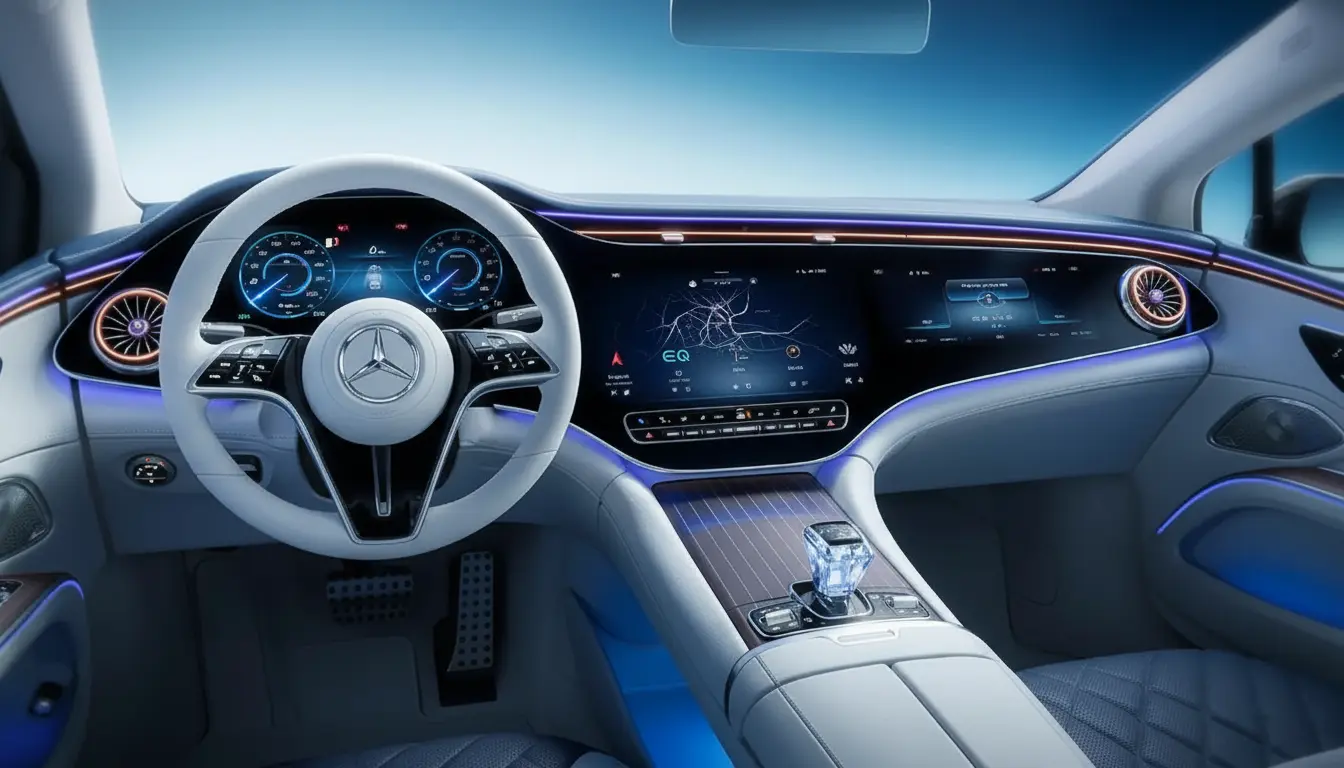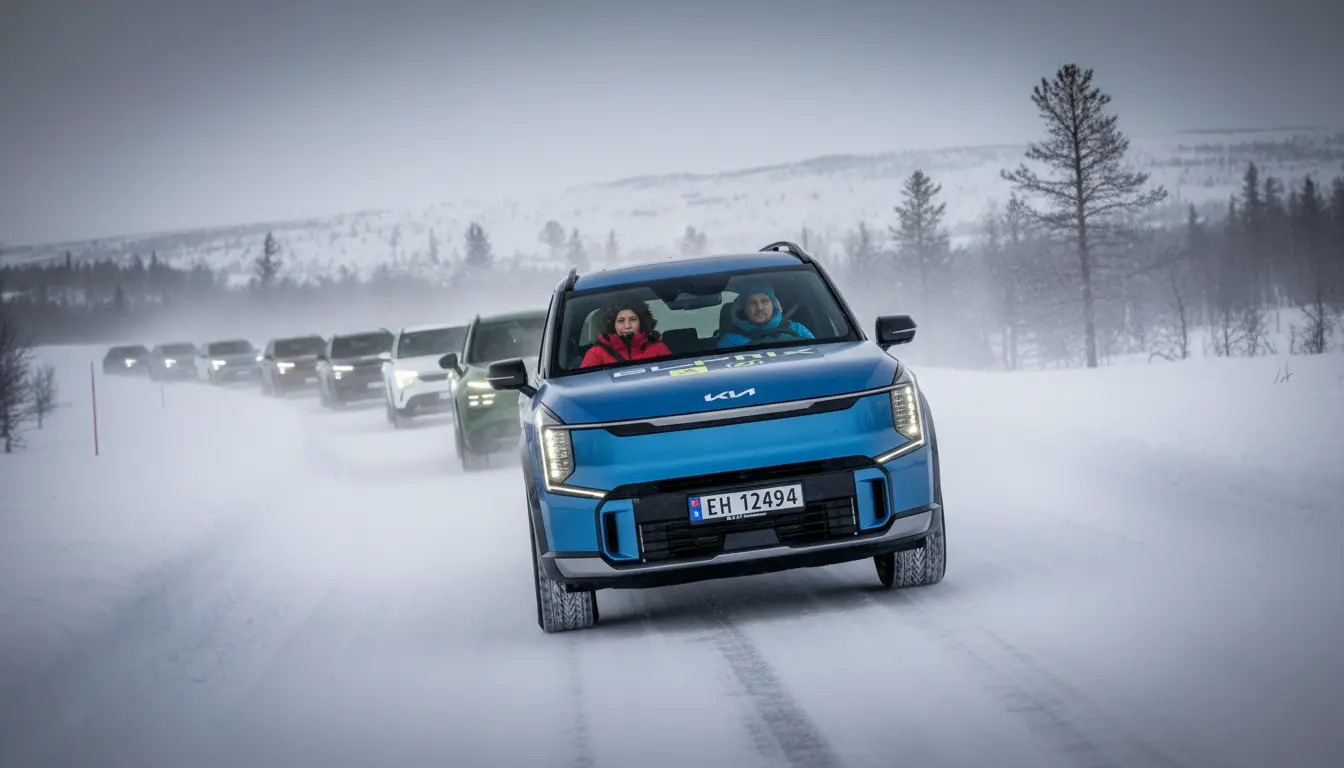Remember the time when fiddling with a little dial or button in your car was the height of modern convenience? Then suddenly, in waltzed the touchscreens – sleek, stylish, and endlessly smudge-prone. Mercedes, like so many, went all-in on this digital transformation. But now, in a twist that might make your inner analogue fanatic smile, the legendary German automaker is staging a comeback for the humble button. It turns out, some old habits are not only hard to break—they might just be safer (and less frustrating) after all!
The Rise and Pause of the Touchscreen Era
When Mercedes unveiled its immense MBUX Hyperscreen—a dazzling 1.41-meter slab stretching from pillar to pillar across the dashboard—its goal was clear: simplify, centralize, digitize. Climate control? Navigation? Everything filtered through a maze of digital menus. This approach echoed across the industry: out went the physical buttons, in came the touch-only experience, a movement that swept traditional controls into the shadows—or out of the car entirely.
But not everyone was clapping along. As the years clicked by, something became clear: not all drivers were sold on the whole « just poke the screen and pray you don’t turn the AC to sauna » philosophy.
Buttons Stage a Comeback: Mercedes Listens (Really!)
Enter the newest Mercedes GLC and CLA Shooting Brake. These cars are more than new models—they mark a shift in attitude. Out with the old new, in with a new old: the steering wheels have been redesigned with real buttons and rotary dials. According to Magnus Östberg, head of software at Mercedes, this change is rooted in real-world data. And those stats point to one conclusion: buttons are better.
Östberg doesn’t mince words. The best approach to both safety and ergonomics? Mixing tactile surfaces and physical controls. Drivers appreciate—and actively request—physical buttons for common tasks. That’s why Mercedes plans to load future SUVs with more of them, making use of cabin space and meeting the clear wishes of their clientele.
Of course, not all drivers are created equal. Mercedes is tuning its strategy according to local tastes:
- European buyers tend to favor the reassuring touch of a button.
- Asian customers, by contrast, gravitate toward expansive screens and sophisticated voice controls.
No matter where you are, it seems Mercedes wants you to have the choice—but with a slight nudge toward safety and simplicity.
The Industry Reconsiders: Buttons Back in Fashion?
Mercedes isn’t making this U-turn alone. Volkswagen is also reviving traditional controls after experimenting with touch panels that, frankly, left some buyers and reviewers cold. In Munich, Volkswagen’s latest design language ditches the divisive capacitive buttons in favor of honest-to-goodness physical ones—a move that’s already earning nods from critics.
And it’s not just customer polls driving this shift. Safety organizations like Euro NCAP are turning up the heat: as of now, a car will only earn the coveted five-star safety rating if it maintains physical controls for fundamental features like indicators and ventilation. That safety argument isn’t just persuasive—it’s decisive for automakers mapping out their next dashboards.
One Size Doesn’t Fit All: A Tale of Taste and Tech
Yet not everyone is rowing in the same direction. Mazda, famous for its loyalty to compact screens and classic button layouts, has decided to zig where others zag. The upcoming CX-5 2025 hands key controls over to a large central touchscreen, running exactly counter to Mercedes’ new philosophy. If variety is the spice of life, it looks like car interiors are about to get a lot zestier.
For all this, don’t expect the big touchscreens to shrink and slink away. Gordon Wagener, head of design at Mercedes, is still very much on Team Software. He cites Apple’s seamless user experience as a gold standard and vows Mercedes will keep its signature Hyperscreens. Yet, even while going big on glass, Mercedes will ensure drivers’ favorite and most frequent tasks get a real, sturdy button. It’s the digital world and the analog touch—together at last.
Conclusion: The Button Strikes Back—And That’s Good News
What’s the takeaway from all this button-pushing (literal and figurative)? Sometimes, progress means learning from the past. Mercedes’ renewed affection for buttons shows that modern luxury isn’t just about more screens, but about smarter interfaces—ones that get you where you want to go, at the perfect temperature, with your eyes still on the road. So next time you reach for the AC and feel a click instead of a beep, remember: it’s not a step back. It’s a leap forward—for safety, sanity, and the simple joy of pushing a button.

John is a curious mind who loves to write about diverse topics. Passionate about sharing his thoughts and perspectives, he enjoys sparking conversations and encouraging discovery. For him, every subject is an invitation to discuss and learn.






